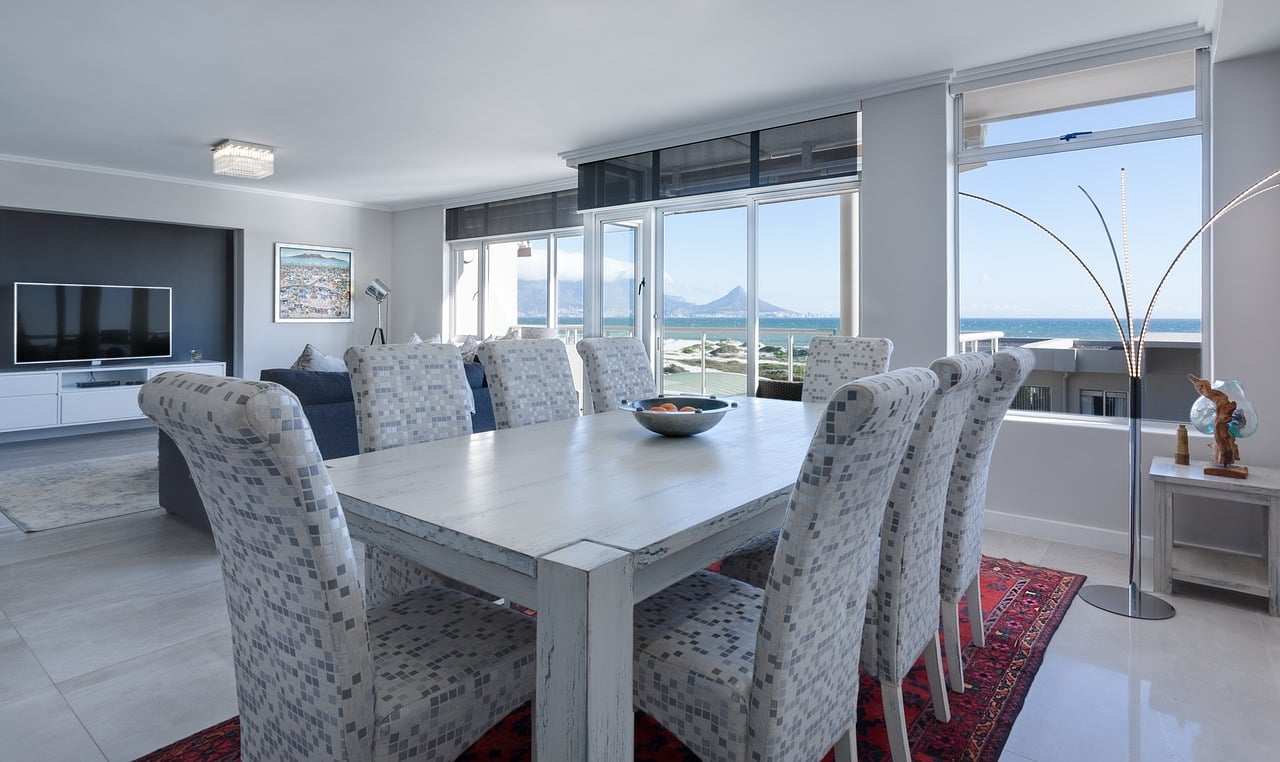What's the Ideal Lighting Scheme for a Cozy Dining Area?

Creating the perfect ambiance in a dining room or restaurant requires more than just tasteful decor and a well-prepared meal. It’s also about selecting the ideal lighting scheme. Lighting can make or break the mood of a room, transforming a space from cozy and inviting to stark and sterile with the flip of a switch. From pendant lights to table lamps, LED fixtures, and chandelier designs, there are countless ways to illuminate a dining area. But what is the best lighting scheme for creating a cozy, intimate atmosphere? This article will explore that question in detail, providing you with valuable ideas and tips to create the perfect lighting design for your dining area.
The Importance of Layered Lighting
When it comes to designing a cozy dining area, your first consideration should be creating a layered lighting scheme. A single overhead light can create harsh shadows and an uninviting atmosphere. In contrast, layered lighting uses a mix of ambient, task, and accent lighting to create a warm and welcoming space.
This might interest you : How to Set Up a Functional Home Recycling Station?
Ambient lighting is the main source of light in the room. This can be from natural light sources like windows, or artificial ones such as ceiling fixtures. Task lighting is focused on specific areas where activities occur, such as the dining table. Accent lighting is used to highlight specific architectural features or artwork.
In a dining room, the pendant light or chandelier over the table is typically the primary source of task lighting. To create a cozy atmosphere, ensure this fixture is dimmable. The ability to adjust the brightness allows you to set the mood for different occasions.
Also read : Tips for Incorporating Sustainable Decor in Your Home?
Choosing the Right Fixtures
Choosing the right fixtures is crucial in creating a cozy dining room. Pendant lights, chandeliers, and wall sconces can all contribute to the overall lighting design of the space.
Pendant lights are an excellent choice for dining areas. They provide direct light onto the dining table, creating an intimate and focused dining experience. When choosing a pendant light, consider the size and style of your dining table and the overall decor of the room. The fixture should complement the style of the room without overpowering it.
Chandeliers add an element of grandeur and elegance to a dining room. They provide a focal point and can set the tone for the entire space. When selecting a chandelier, consider the size of the room and the height of the ceiling. A chandelier that is too big or too small can throw off the balance of the room.
Wall sconces are an excellent source of ambient lighting, providing a warm and welcoming glow. They can also serve as accent lighting, highlighting art or other features in the room.
The Power of LED Lighting
Light Emitting Diodes, commonly known as LEDs, have revolutionized the world of lighting. They are energy-efficient, durable, and provide excellent color rendering. LEDs are the perfect choice for a cozy dining area, offering a wide range of color temperatures and brightness levels.
One of the main advantages of LED lights is their dimmability. This allows you to easily control the brightness of your fixtures, creating the perfect mood for any occasion.
LEDs also come in a wide range of colors, allowing you to create a specific atmosphere in your dining room. Warm, soft white LEDs create a cozy, intimate feel, ideal for relaxed dinners. On the other hand, cool, bright white LEDs can create a more formal, modern atmosphere.
Incorporating Color and Design
The color and design of your lighting fixtures play a significant role in creating a cozy dining area. The right colors can enhance the mood, while the right design can add a touch of class and sophistication.
Choose warm colors such as yellows, oranges, and reds to create a cozy and inviting atmosphere. These colors can be incorporated into the light fixtures themselves or used in accent lighting to highlight certain areas of the room.
When it comes to design, vintage fixtures with a rustic charm can add a touch of coziness and warmth to a dining area. Alternatively, sleek, modern designs can create a chic, sophisticated atmosphere. The design of your fixtures should match the overall style of the room, creating a cohesive and harmonious space.
Getting the Lighting Right
Getting the lighting right in a dining area involves more than just selecting the right fixtures or choosing the correct color temperature. It’s about creating a balance between the different types of lighting and ensuring that they work together to create a warm and inviting atmosphere.
For example, if you have a pendant light or chandelier over the dining table, ensure the surrounding space is also well lit to avoid creating a harsh contrast. Wall sconces or recessed ceiling lights can provide this additional lighting.
Also, consider the use of dimmer switches. They allow you to easily adjust the brightness of your lights, creating the perfect mood for any occasion. A romantic dinner for two, for instance, may require softer lighting than a lively family gathering.
Remember, the goal is to create a cozy and inviting atmosphere. This means avoiding harsh, direct light and focusing instead on warm, soft illumination that creates a sense of comfort and relaxation.
The Role of Natural Light in Dining Room Lighting
In the realm of dining room lighting, the power of natural light should never be underestimated. When utilized correctly, it can create an inviting, warm, and relaxed atmosphere that is perfect for enjoying meals and engaging in conversation.
Windows are the primary source of natural light in a room. They should be strategically placed to provide ample daylight during meals, specifically during breakfast and lunch. This can be enhanced by using light curtains or blinds that allow daylight to filter through, creating a soft, diffused light effect.
Skylights are another excellent source of natural light. They provide a top-down illumination that can make a dining room feel open and airy. Furthermore, they can help reduce the need for artificial lighting during the day, making the space more energy-efficient.
If your dining area lacks natural light, mirrors can be used to amplify the available light. Placed strategically, they can reflect light from windows or other light sources, brightening up the room.
Remember, natural light is a dynamic element that changes throughout the day, influencing the mood and ambiance of the room. By harnessing this change, you can create a truly unique and cozy dining area.
The Influence of Restaurant Lighting Techniques
While discussing the ideal lighting scheme for a cozy dining area, it’s worth noting the lessons that can be learned from restaurant lighting. These establishments often excel at creating ambiances that encourage diners to relax and enjoy their meals.
One of the key lighting ideas borrowed from restaurants is the use of light to zone the space. This involves using different types of light fixtures and lighting techniques in various parts of the dining area. For example, task lighting can be used over the dining table, while accent lighting can highlight a piece of art or a particular architectural feature.
Another technique is the use of mood lighting, which involves changing the lighting conditions to reflect different times of the day or special occasions. This can be achieved using dimmer switches or color-changing LEDs.
Finally, restaurant lighting often makes excellent use of decorative fixtures. These can add character to the dining room and act as a focal point. Whether it’s a grand chandelier, a set of pendant lights, or a collection of vintage wall sconces, a stylish light fixture can take the ambiance of a dining room to a whole new level.
Conclusion: Creating Your Ideal Cozy Dining Area
In conclusion, creating the ideal lighting scheme for a cozy dining area requires thoughtful planning and a keen eye for detail. From choosing the right mix of ambient, task, and accent lighting to selecting the perfect light fixtures, every decision plays a crucial role.
Consider the size, design, and color of your light fixtures, the natural light available, and the desired ambiance of the room. Incorporate elements of restaurant lighting and use LED lights for their versatility and energy efficiency. Use dimmers to control the brightness and set the mood for different occasions.
Remember, the goal here is not just to light up the room but to create an atmosphere that is inviting, warm, and conducive to enjoyable dining experiences. It’s about creating a space where memories are made, laughter is shared, and good food is savored. With the right lighting design, your dining area can become the heart of your home, a place where everyone wants to gather.
